When the Chinese Nationalist Party (KMT) government led by Chiang Kai-shek (蔣介石) retreated to Taipei in 1949, the northwestern city of Hsinchu gained tens of thousands of new residents.
An estimated 2.2 million people — civilians as well as soldiers and their dependents — migrated from China to Taiwan between the end of World War II and the Communists’ capture of Hainan Island in spring 1950. Several air force units relocated to Hsinchu’s airfield.
In Hsinchu and throughout Taiwan, the KMT scrambled to find accommodation for military personnel and their family members. The luckiest were assigned houses built by the Japanese government during the 1895-1945 period of colonial rule. Others were billeted in schools or temples. Many had no choice but to assemble some place where they could cook and sleep, using whatever materials they could find.
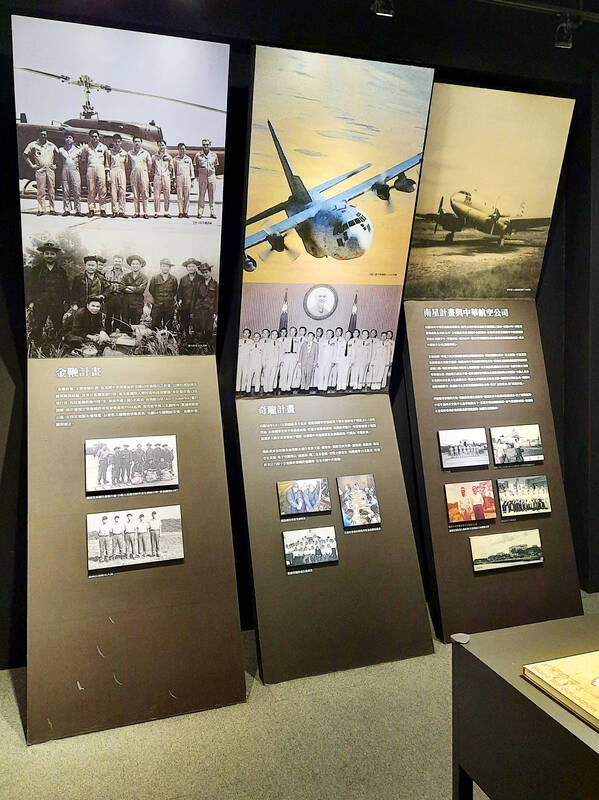
Photo: Steven Crook
As clusters of shanties sprang up around army bases, KMT propaganda assured soldiers that their wives and children wouldn’t have to put up with such poor living conditions for long.
Chiang declared that the KMT would “prepare for one year, counterattack in two years, sweep out the enemy in three years and succeed within five years.” The regime justified channeling resources to the armed forces, rather than building proper homes, by claiming that a victorious return to the mainland was both inevitable and imminent.
There was no such return, of course. By 1982, the shoddiest jerry-built houses had been demolished and the soldiers’ settlements had been formalized into 879 villages across the nation. Such places developed a subculture that included “military village dishes” (眷村菜, juan cun cai) — hybridized recipes devised by cooks from differents part of China who tried to recreate hometown flavors using Taiwanese ingredients.
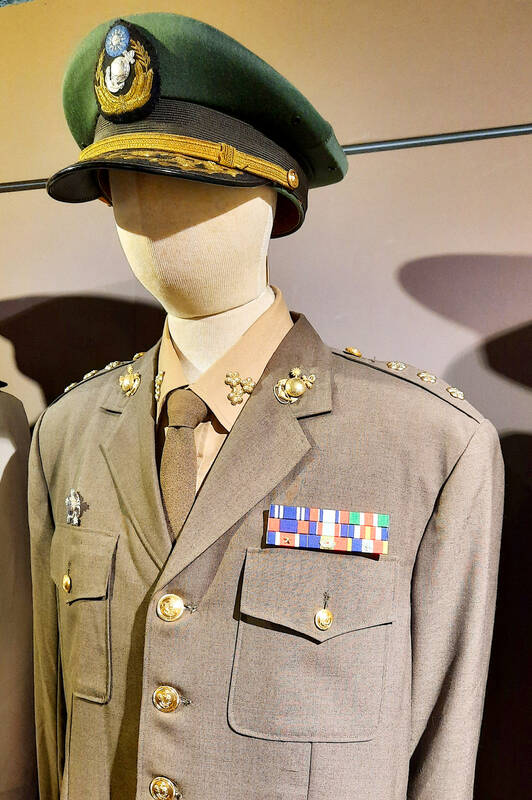
Photo: Steven Crook
LIFE IN A MILITARY VILLAGE
Over the past few decades, military dependents’ villages have almost disappeared from the local landscape. And of the several little museums that preserve and celebrate this feature of postwar society, the one in Hsinchu is perhaps the best.
The Military Dependents Village Museum of Hsinchu City (新竹市眷村博物館), at 105 Dongda Road (東大路) Section 2, is within walking distance of major attractions such as the City God Temple (都城隍廟) and 1.7km from Hsinchu TRA Train Station.
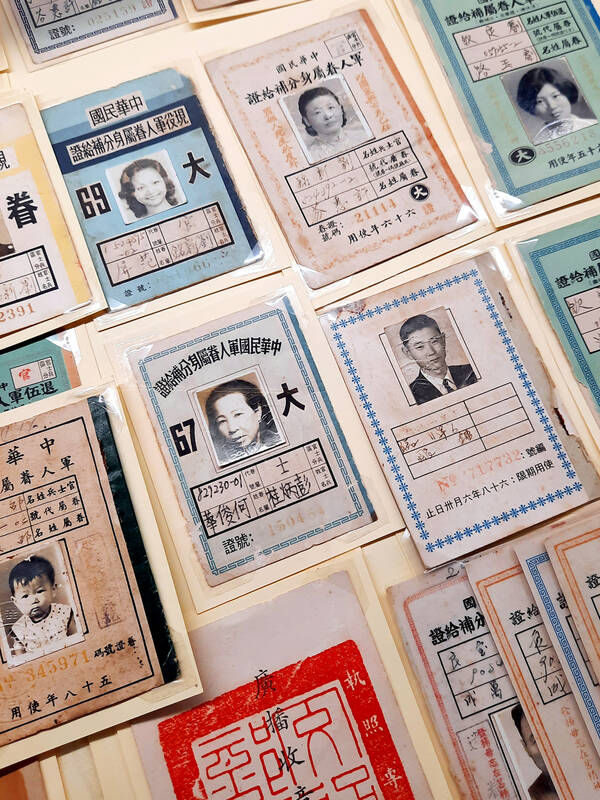
Photo: Steven Crook
It’s open from 9am to 5pm, Tuesday to Sunday. Admission is free, and inside you’ll find some highly memorable items, not just the usual uniforms, sewing machines and family photographs.
In English as well as Chinese, the first floor outlines the mass movement of people to Taiwan at the end of the Chinese Civil War, and shows where in the city the newcomers settled down.
Air Force villages were numbered according to the order in which they were established; by the early 1960s, more than 20 of them were scattered around Hsinchu. The other armed services gave names to their communities. For instance, one settlement for army personnel and their families was called Luguang (“Army Glory”) New Village (陸光新村).
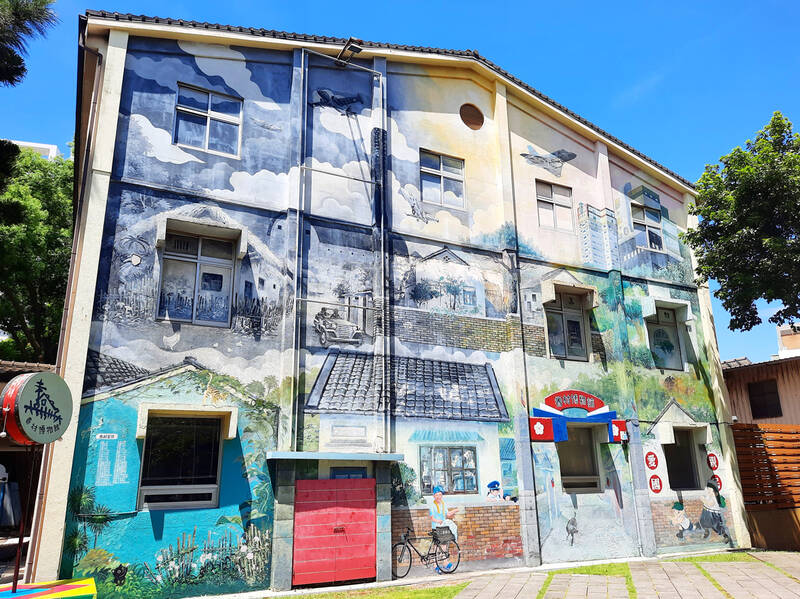
Photo: Steven Crook
Luguang New Village was founded in 1953 and demolished half a century later. The first set of houses had bamboo frames, tiled roofs and mud walls.
In contrast to media depictions of military dependents’ villages, which tend to focus on the sense of community in such places, this museum avoids the trap of nostalgia. There’s a mockup of the grim communal toilets that village residents had to use, accompanied by text which describes the lack of lighting at night, and the consequent ubiquity of chamberpots.
To supplement their meager salaries, servicemen received essentials such as rice, flour, and cooking oil. Boxes in which tobacco rations were issued are displayed next to “patriotic” lottery tickets, which the government sold between 1950 and 1987 to make up for paltry tax revenues.
Upstairs, panels explain how scrapped airplanes were recycled into useful household items, and how military-village households celebrated weddings.
This isn’t a large museum by any standards, but if your interest in the past is similar to mine, expect to spend an hour here — and also some time 400m down the road at the Black Bat Squadron Memorial Hall (黑蝙蝠中隊文物紀念館).
THE BLACK BATS
The Black Bat Hall, southeast of the Military Dependents Village Museum at 16 Dongda Road Section 2, is open from 9am to 5pm, Tuesday to Sunday. There’s no admission charge.
Unfortunately, if you don’t read Chinese, you won’t learn much about the Black Bats, an Air Force unit created to undertake long-distance reconnaissance missions over hostile territory.
The displays inside the memorial hall are in Chinese only, and the bilingual leaflet the friendly volunteers will hand you when you enter doesn’t provide a lot of detail. You may prefer to stay at home and read through the several pages of English-language information (with photos) compiled by the Ministry of National Defense at https://air.mnd.gov.tw/EN/Unit/Activity_Detail.aspx?CID=173&ID=113.
Like many people, I knew before visiting the hall that the Black Bats had lost several aircraft and scores of personnel during Cold War spy-flights across China. But I had no idea they’d also conducted operations in Indochina during the Vietnam War.
The squadron flew 252 sorties to transport and supply South Vietnamese troops, during which three Black Bat planes were damaged by enemy fire.
In 1971, they trained to fly helicopters from Thailand across Laos in order to install acoustic sensors at locations in North Vietnam. The CIA (who’d been instrumental in the creation of the Black Bats) wanted to use Taiwanese pilots so Washington would have plausible deniability in the event of the crew being captured. The Ministry of National Defense Web site implies Black Bat pilots carried out the mission, but other sources say the Taiwanese volunteers weren’t up to the job and were sent home. In the end, it was American pilots who carried out what’s known as the “Vinh wiretap.”
Perhaps the Black Bats’ most daring operation was an 8,000km-plus roundtrip from a US air base in northern Thailand to China’s Gansu province in spring 1969. A C-130 Hercules, modified for electronic warfare, successfully delivered sensors that allowed Washington to spy on Beijing’s ballistic missile program.
Unlike many of their comrades, the 12 men on board successfully evaded communist forces and made it home. By any standards, it was a feat that deserves to be remembered.
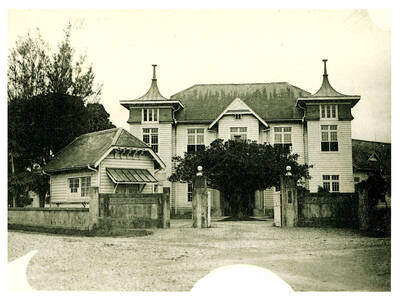
April 14 to April 20 In March 1947, Sising Katadrepan urged the government to drop the “high mountain people” (高山族) designation for Indigenous Taiwanese and refer to them as “Taiwan people” (台灣族). He considered the term derogatory, arguing that it made them sound like animals. The Taiwan Provincial Government agreed to stop using the term, stating that Indigenous Taiwanese suffered all sorts of discrimination and oppression under the Japanese and were forced to live in the mountains as outsiders to society. Now, under the new regime, they would be seen as equals, thus they should be henceforth
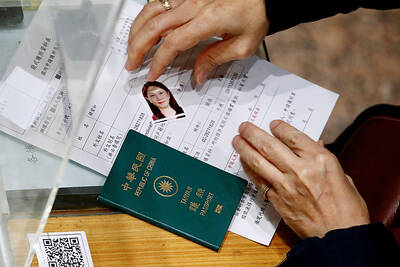
Last week, the the National Immigration Agency (NIA) told the legislature that more than 10,000 naturalized Taiwanese citizens from the People’s Republic of China (PRC) risked having their citizenship revoked if they failed to provide proof that they had renounced their Chinese household registration within the next three months. Renunciation is required under the Act Governing Relations Between the People of the Taiwan Area and the Mainland Area (臺灣地區與大陸地區人民關係條例), as amended in 2004, though it was only a legal requirement after 2000. Prior to that, it had been only an administrative requirement since the Nationality Act (國籍法) was established in
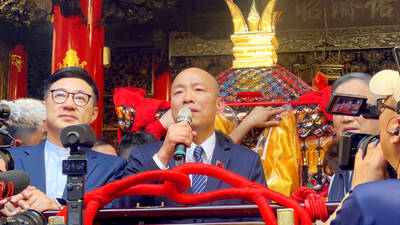
Three big changes have transformed the landscape of Taiwan’s local patronage factions: Increasing Democratic Progressive Party (DPP) involvement, rising new factions and the Chinese Nationalist Party’s (KMT) significantly weakened control. GREEN FACTIONS It is said that “south of the Zhuoshui River (濁水溪), there is no blue-green divide,” meaning that from Yunlin County south there is no difference between KMT and DPP politicians. This is not always true, but there is more than a grain of truth to it. Traditionally, DPP factions are viewed as national entities, with their primary function to secure plum positions in the party and government. This is not unusual
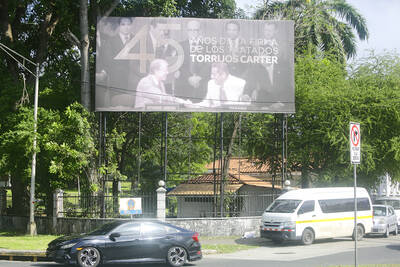
US President Donald Trump’s bid to take back control of the Panama Canal has put his counterpart Jose Raul Mulino in a difficult position and revived fears in the Central American country that US military bases will return. After Trump vowed to reclaim the interoceanic waterway from Chinese influence, US Defense Secretary Pete Hegseth signed an agreement with the Mulino administration last week for the US to deploy troops in areas adjacent to the canal. For more than two decades, after handing over control of the strategically vital waterway to Panama in 1999 and dismantling the bases that protected it, Washington has